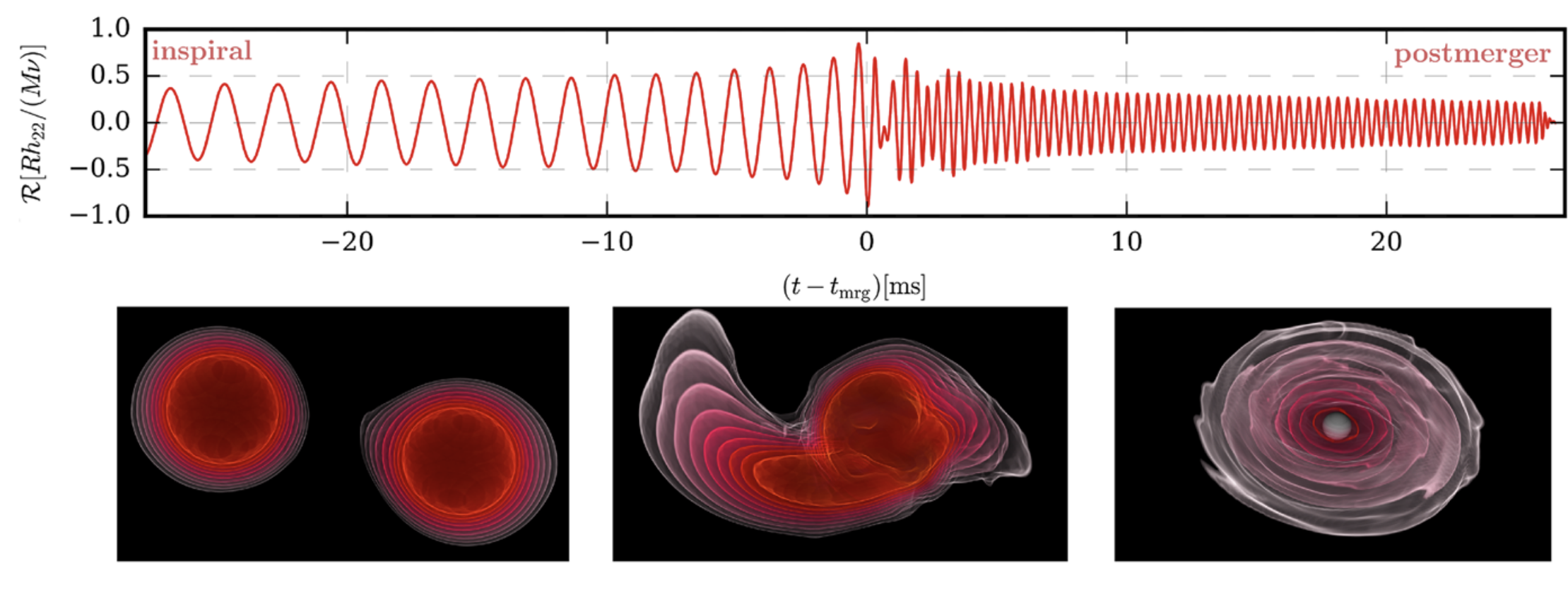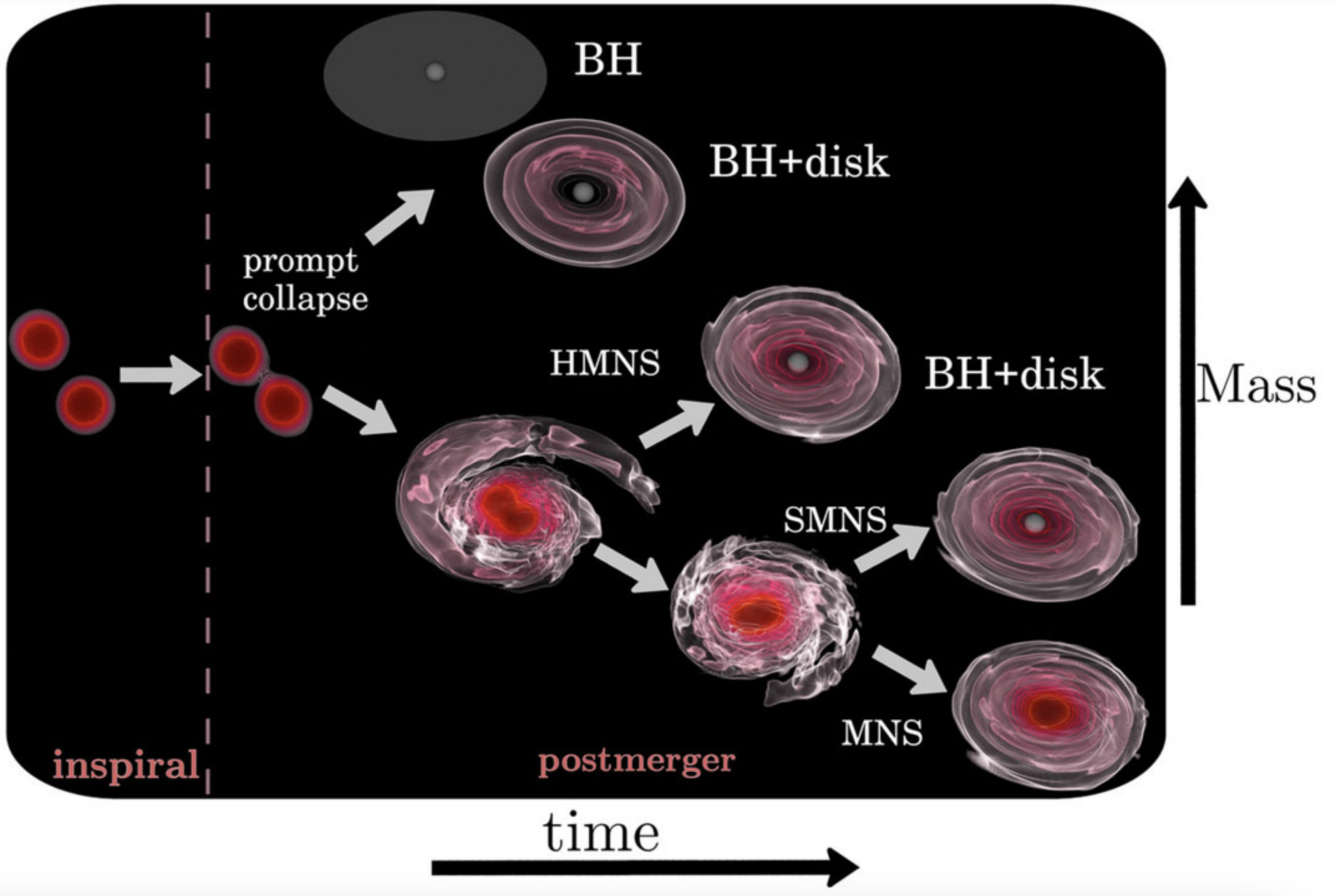This is an old revision of the document!
Table of Contents
Compact Binary Mergers
Numerous compact objects are bound inside binary systems, some of these, so-called compact binary systems are either binary neutron star systems (often also called double neutron star systems), black hole - neutron star systems, and binary black hole systems. On top of these, well-established scenarios, there is also the possibility for the existence of exotic compact objects that also could be bound inside compact binaries. In the following, we will provide some additional information about
Binary Neutron Star Systems
A system consisting of two neutron stars is called a binary neutron star or a double neutron star system. Numerous of these systems exist and have been observed through electromagnetic observations. Among the best well-known binary neutron star system is the Hulse-Taylor Pulsar. The observation of the increase in the orbital frequency of the Hulse-Taylor Pulsar has been the first indirect evidence for the emission of gravitational waves. In 2017 it was possible, for the first time, to detect directly gravitational waves emitted from the merger of two neutron stars, the system GW170817. In addition to the emission of gravitational waves, neutron star mergers are also bright sources of electromagnetic counterparts. In particular, the ejected material that can trigger a kilonova or the remnant system, which consists of a central compact object and an accretion disk.
Stages of the Binary Neutron Star Coalescence:

- Inspiral: Due to the emission of gravitational waves, the system `loses' angular momentum such that the two stars approach each other. To leading order, the emitted gravitational wave system depends on the quadrupole moment of the system and can be computed following the quadruple formula:
- Merger
- Postmerger/Ringdown
Black Hole - Neutron Star Systems
Similar to binary neutron star systems, a neutron star can also be on a bound orbits with a black hole. Such black hole - neutron star systems have been observed for the first time in January 2020 with GW200105 and GW200115. Given the presence of matter the collision of a black hole neutron star system could in principle also be connected with electromagnetic counterparts, however, we have not been able to confidentially detect a short gamma-ray burst or a kilonova created from a black hole - neutron star collision.

